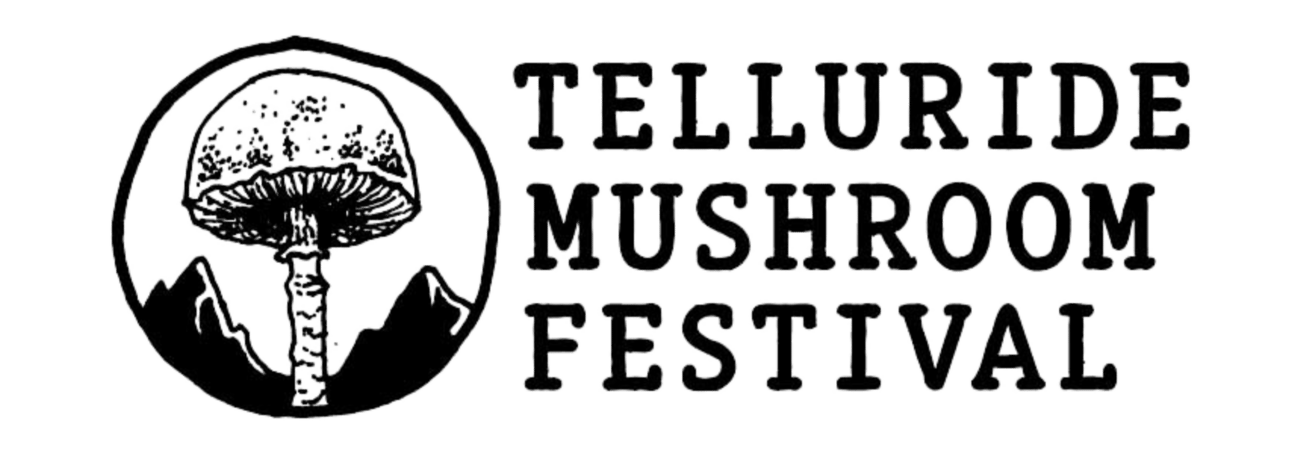IN TODAY’S EDITION
🛡 | Kidney shield
🥊 | Cancer blockers
⛲ | The fountain of youth
Hi Shroomers. It’s your final call to enter our Instagram giveaway for 2 passes and a half-campsite at Telluride Mushroom Festival. Enter by 12:00 p.m. CST today on the post below, and we’ll announce winners over on Instagram.
If you don’t win, the Telluride Institute is also offering all Shroomers 10% off a pass using SHROOMERGIVEAWAY10 or purchasing through this link.
HEALTH & WELLNESS
Kidney shield 🛡️ Ergosterol, a natural sterol found in edible mushrooms, helped protect diabetic mice from kidney damage by boosting fat metabolism in the kidneys. It worked by activating CPT1A, a key enzyme that burns fat, which reduced harmful lipid buildup and inflammation linked to diabetic kidney disease.
Cancer blockers 🥊 Compounds from mushrooms like reishi (Ganoderma lucidum) and turkey tail (Trametes versicolor) can stop cancer cells from growing while sparing healthy ones. In lab tests, oyster mushroom (Pleurotus ostreatus) extracts triggered up to 70% tumor reduction in mice and halted cell growth in breast, colon, and prostate cancers by inducing apoptosis and arresting the cell cycle. These β-glucans, lectins, and polysaccharides are emerging as powerful natural allies in cancer prevention and treatment.
Medicine vault unlocked 🔓 Over 400 new fungal compounds, including 284 polyketides and 108 alkaloids, were discovered in 2024 alone. These bioactive molecules show promising antimicrobial, anticancer, antiviral, and neuroprotective properties, with some rivaling synthetic drugs in potency. The paper highlights fungi as an under-explored pharmaceutical frontier with massive potential for future therapies.
Understand the power ⚡ Reishi (Ganoderma lucidum) contains over 400 bioactive compounds—including triterpenoids, polysaccharides, and peptides—that help fight inflammation, regulate immunity, reduce tumor growth, and protect organs like the liver and kidneys. In lab and animal studies, reishi extracts suppressed cancer cell growth, blocked allergic reactions, and lowered oxidative stress, backing its long-standing use in traditional medicine with modern pharmacological proof.
Amatoxin alert ⚠️ New research identifies early blood biomarkers, like elevated GDF15 and lowered albumin, that may predict liver failure in patients poisoned by amatoxin-containing mushrooms such as death cap (Amanita phalloides). These warning signs showed up within 24 hours, offering doctors a critical window to act before severe liver damage occurs.
Nutrient-packed wild picks 🌲 Termite mushroom (Termitomyces clypeatus), paddy straw mushroom (Volvariella volvacea), and wood ear (Auricularia auricula-judae) are rich in antioxidants, flavonoids, and essential minerals like potassium and iron. These wild fungi showed strong anti-inflammatory and free-radical-fighting effects.
Brain cell shield 🧠 A blend of mycelia from reishi (Ganoderma lucidum), lion’s mane (Hericium erinaceus), and snow fungus (Tremella fuciformis) protected brain cells from oxidative stress and inflammation in lab models. The extract reduced ROS levels, prevented cell death, and calmed immune overactivation, pointing to its potential as a natural neuroprotective for aging and cognitive health.
Joint relief 🦴 Porcini mushroom (Boletus edulis) contains phenolic compounds that eased joint damage, reduced inflammation, and protected cartilage in osteoarthritis models. In lab tests, the extract lowered levels of key inflammatory markers and enzymes that break down joint tissue.
Heart help ❤️ The split gill mushroom (Schizophyllum commune) improved cholesterol, boosted “good” HDL, and restored liver antioxidant enzymes in rats with high-fat diets. The mushroom’s compounds, like β-glucans and schizophyllan, also regulated inflammation and protected arteries.
PSILOCYBIN & LEGISLATION
Censorship crackdown call 📣 A coalition of over 80 organizations—including Students for Sensible Drug Policy, Drug Policy Alliance, and Psychedelics Today—has issued an open letter to Meta demanding an end to the censorship of cannabis, psychedelic, and harm reduction content. The letter outlines how educators, healthcare professionals, and advocates are routinely shadowbanned or deplatformed despite complying with local laws. The group urges Meta to adopt transparent policies, engage with affected communities, and create dedicated appeals processes. In a time of rising overdose deaths and mental health crises, they argue, suppressing life-saving education is not neutrality, it’s harm.
The fountain of youth ⛲ A new two-part study found that psilocybin significantly extended lifespan and improved biological aging markers in mice and human cells. Aged mice (19 months old, ~60–65 human years) given psilocybin lived 30% longer than controls, with visible signs of healthier aging: better fur, fewer white hairs, and even hair regrowth. In the lab, human skin and lung cells treated with psilocin (psilocybin’s active form) lived over 50% longer, showing preserved telomeres, reduced oxidative stress, and improved DNA repair. These results offer the first direct support for the “psilocybin–telomere hypothesis,” suggesting psilocybin may slow aging by reducing cellular damage and preserving chromosome health.
Veteran healing journeys 🌄 Military veterans who participated in naturalistic retreats involving psilocybin or ayahuasca reported significant emotional benefits, including reduced PTSD symptoms, greater psychological flexibility, and increased emotional regulation. In this qualitative study of 16 participants, many described their psychedelic experience as spiritually meaningful, helping them reframe trauma and reconnect with life. While anecdotal, the findings echo broader calls for integrating culturally informed, non-clinical psychedelic healing into veteran care models.
Landmark bipolar trial 💡 In the first trial of its kind, psilocybin therapy significantly reduced depression and improved quality of life in people with bipolar II disorder (BD-II). After one 10 mg session, 29% of participants entered remission; a second 25 mg dose brought even greater improvements. No mania or psychosis was triggered, countering long-held fears about psilocybin in BD-II. Adverse effects like nausea and anxiety were mild and temporary.
Psychedelic archives unlocked 🧠 Between 1960 and 1973, 324 psychiatric patients at Frederiksberg Hospital in Denmark were treated with LSD or psilocybin, often in controlled, multi-session protocols. Of 151 patients with depression, 66% improved; among those with OCD or anxiety, over 50% reported relief. Some patients (about 6%) experienced worsening symptoms, including psychosis or agitation. Though the treatments were halted by 1974, the records offer rare, detailed insight into early psychedelic psychiatry.
Healing companions 🧬 Psilocybin and 5-MeO-DMT show promise in treating traumatic brain injury by enhancing neuroplasticity and reducing inflammation. Psilocybin activates TrkB receptors for brain growth, while 5-MeO-DMT targets sigma-1 receptors for neuroprotection. Both work through serotonin pathways and could support recovery from long-term brain damage.
Neuroactive mix 🧠 Psilocybe mushrooms produce a range of psychoactive compounds (psilocybin, psilocin, baeocystin, and norbaeocystin), each with distinct effects. This review covers over 200 species, revealing genetic variations, alternative synthesis pathways, and potential applications for depression, PTSD, addiction, and cluster headaches. Some lesser-known compounds may offer unique therapeutic benefits beyond psilocybin alone.
Representation gap 📊 A review of nine psychedelic trials (8 psilocybin, 1 LSD) found that 87.2% of participants were white, while Black and Asian individuals made up only 3.0% and 5.0%, respectively. In U.S.-only trials, participation-to-population ratios confirmed the underrepresentation of Black (PPR = 0.317) and Asian (PPR = 0.799) participants. Only 47.7% were women, and just 13.4% of reported participants were Hispanic or Latino. efficacy.
Quit support 🚬 Across eight studies, psilocybin showed the strongest potential among classic psychedelics for helping people quit or reduce smoking. It was the most studied compound (used in 7 of 8 trials), outperforming LSD, mescaline, and ayahuasca in frequency and reported outcomes. While all studies had a high risk of bias, results suggest psilocybin may help disrupt nicotine addiction.
Therapist temperature check 🌡 In a nationwide survey of 335 Australian mental health professionals, 60% supported the use of psychedelics like psilocybin in therapy, but only 15.5% felt confident discussing them with clients. While most providers believed psychedelics have therapeutic potential, concerns about safety, training gaps, and stigma remain.
Rewiring pathways 🪛 Psilocybin and ketamine both enhance neuroplasticity through shared pathways like mTOR and BDNF/TrkB signaling, rapidly improving mood and promoting brain rewiring. But unlike ketamine, psilocybin also shifts emotional processing, reducing negative bias and supporting relearning, which may lead to longer-lasting effects.
ECOLOGY & CONSERVATION
Helps morels grow better 🌲 Researchers introduced a bacterium (Pedobacter sp. DDGJ) into morel (Morchella importuna) mushrooms, creating an artificial endosymbiosis that significantly improved mushroom growth, stress resistance, and yield. Compared to the control, morels co-cultured with this bacterium showed a 1.48-fold increase in biomass, higher heat and oxidative stress tolerance, and improved sclerotia formation.
Maize superteam 🌽 When corn was grown in phosphorus-poor soil, co-inoculating it with arbuscular mycorrhizal (AM) fungi and Bacillus subtilis significantly boosted plant performance. Compared to controls, co-inoculated maize showed 28% more root length, 37% more leaf area, and 20–40% greater uptake of key nutrients like nitrogen, phosphorus, and potassium.
Plastic-eating potential ♻️ Over 60 fungal and bacterial species—including Aspergillus, Penicillium, and Phanerochaete chrysosporium—can degrade tough plastics like polyethylene, polystyrene, and polyurethane. Some fungi even broke down refrigerator foam and synthetic rubbers. The microbes work through enzymatic digestion, environmental adaptation, and oxidative breakdown.
Mosquito control 🦟 Fungi from Brazil’s Fiocruz Amazônia Collection successfully infected Anopheles aquasalis, a key malaria vector, within 48 hours. Four strains of entomopathogenic fungi, including Beauveria bassiana and Metarhizium anisopliae, showed infection rates between 80% and 100%, depending on the dose and strain. These native fungi caused visible mycosis in adult mosquitoes.
Leather from waste 👜 A flexible, leather-like textile made from mycelium and lignocellulosic agricultural waste shows strong potential as a sustainable alternative to traditional materials. The study highlights how fungal strains like reishi (Ganoderma lucidum) and oyster (Pleurotus ostreatus) can be grown on sawdust, straw, or corn husks to produce durable, biodegradable fabrics.
Replacing pesticides 🐜 Edible mushrooms produce powerful natural compounds, like peptides, phenols, and terpenoids, that can fight plant pathogens while promoting crop health. These bioactive agents show antimicrobial and antioxidant effects, making mushrooms a promising eco-friendly alternative to synthetic pesticides. The authors suggest integrating these compounds into sustainable pest management strategies, with added potential for commercial use thanks to their edible status.
Toxic cleanup crew ♻️ Fungi, bacteria, and microalgae help break down stubborn pollutants like pesticides, pharmaceuticals, and heavy metals in soil and water. Fungi stood out for their ability to decompose complex compounds, such as polychlorinated biphenyls (PCBs) and petroleum hydrocarbons, thanks to enzymes like laccase and peroxidases. White rot fungi were especially effective, and their biofilms proved valuable in wastewater filtration systems.
MUSH MORE
Howdy 🤠 Was this forwarded to you? Sign up here.
Free resource ✅ The Shroomer Guide to Mushrooms and the easy-to-reference Mushrooms and Medical Benefits Chart.
Mushroom supplements 🍄 Discover extraction methods and recommended picks.
Meet fellow fungi fans 🎪 Bookmark our Festival Directory and start planning.
Our door is open 🚪 Connect with 24k+ Shroomers. Partner with us.
What else 🗒️ Reply to this email! It goes right to my inbox.



